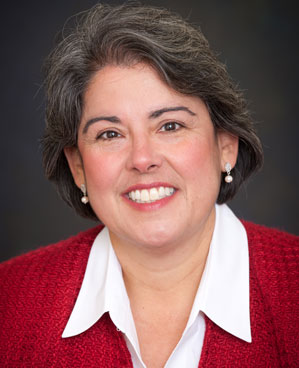College completion study tells story of transfers, lower rates for non-traditional students
A new national study on state-by-state college completion rates finds a significant portion of students in many states transfer before completing a degree and a large percentage of non-traditional students fail to earn a degree over a six-year period. The report, "Completing College: A State-Level View of Student Attainment Rates," was issued by Indiana University's Project on Academic Success and the National Student Clearinghouse® Research Center™.
The report provides extensive breakdowns of state completion rates by analyzing nearly 1.9 million students who were first-time degree-seeking students of any age when they started postsecondary studies in the fall of 2006. It follows their academic performance through spring 2012.
The analysis covers all states where data was complete enough for the fall 2006 cohort to conduct research: 48 states for students who started at four-year public institutions, 36 states for those who started at two-year public institutions and 38 states plus the District of Columbia for four-year private nonprofit institutions.
Indiana is not included in the results for four-year public institutions because too few such institutions from the state participated in the National Student Clearinghouse and provided data for the early years covered by the study. Indiana results are listed for two-year public and four-year private nonprofit institutions, however.
Nationally, 12 percent of students who started at four-year public institutions completed a degree at an institution other than the starting institution. In 20 states, students who started at four-year public institutions showed completions at institutions other than their starting institution ("completions elsewhere") at a higher rate than the average figure taken from the national results. Minnesota had the highest rate of completions elsewhere, with 27 percent completing a degree at a four-year institution other than their starting institution.
Vasti Torres, report co-author and the director of both the Project on Academic Success and the Center for Postsecondary Research, said the report gives a more complete picture of students' academic careers. "The disaggregation of college completion results in this report by institutional type and enrollment intensity provides policy makers with valuable information to consider when looking at completion," Torres said. Torres is a professor of educational leadership and policy studies in the IU School of Education.
Results from states include a distinctive difference between traditional college-age and full-time students and older or part-time students. The six-year completion rate for traditional-age students (those beginning before age 24) starting at four-year public institutions was higher than for adult learners in nearly every state. The gap between completion rates in Vermont was highest, at 42 percent. In 13 states, more than 75 percent of exclusively part-time students at four-year public institutions had not received a credential and were not enrolled at the end of six years. The national rate for such students is 75 percent.
Some other findings from the report:
- In nine states, more than 10 percent of students who started at a four-year public institution and received a degree ended up graduating in a different state. That's 4 percentage points higher than the national average. North Dakota (20 percent) had the highest percentage of students starting in-state but graduating elsewhere.
- In 14 states and the District of Columbia, more than 10 percent of students who started at a four-year private nonprofit institution and received a credential did so in a different state. The national average is 8.8 percent.
- Nationally, 3.2 percent of all students who started at four-year public institutions received their first degree or certificate from a two-year institution. The rate was over 5 percent in Minnesota, North Dakota, and Wisconsin.
- Across the country, 9.4 percent of all students who started at a two-year public institution received their first credential at a four-year institution. The rate was over 10 percent for seven states, the highest in Virginia at 13.2 percent.
Other co-authors on the report are Doug Shapiro, executive research director, and Afet Dundar, associate director, at the National Student Clearinghouse Research Center. The other Project on Academic Success co-authors are Jin Chen, research associate; Mary Ziskin, senior associate director; Eunkyoung Park, research associate; and Yi-Chen Chiang, research associate. The full report is available online .
This report is a supplement to the fourth in the National Student Clearinghouse Research Center's Signature Report series. The Research Center is the research arm of the National Student Clearinghouse, a nonprofit organization that facilitates the exchange and understanding of student enrollment, degree and certificate records on behalf of its more than 3,300 participating higher education institutions. The Signature Reports focus on important issues related to students' college access and progress nationwide.
The Project on Academic Success (PAS) is part of the Center for Postsecondary Research at Indiana University, and conducts practice- and policy-oriented research on opportunity and equity in postsecondary education and the multiple pathways that 21st-century students follow toward postsecondary academic success. The PAS team brings to its research efforts a diversity of specialties including student financial aid policy, college choice, enrollment management, and racial and gender equity. PAS has published numerous reports regarding student persistence trends, the effects of debt on student success outcomes, and institutional practices enhancing student academic success.
 Vasti Torres, Director of the Project on Academic Success, Center for Postsecondary Research
Vasti Torres, Director of the Project on Academic Success, Center for Postsecondary Research